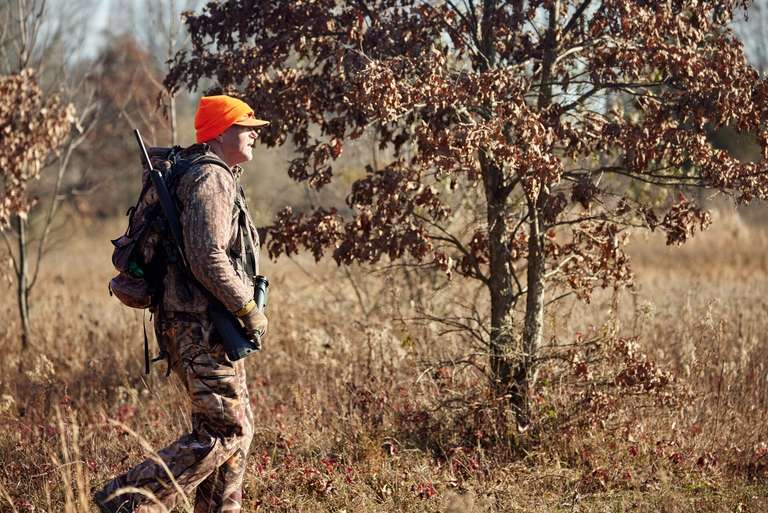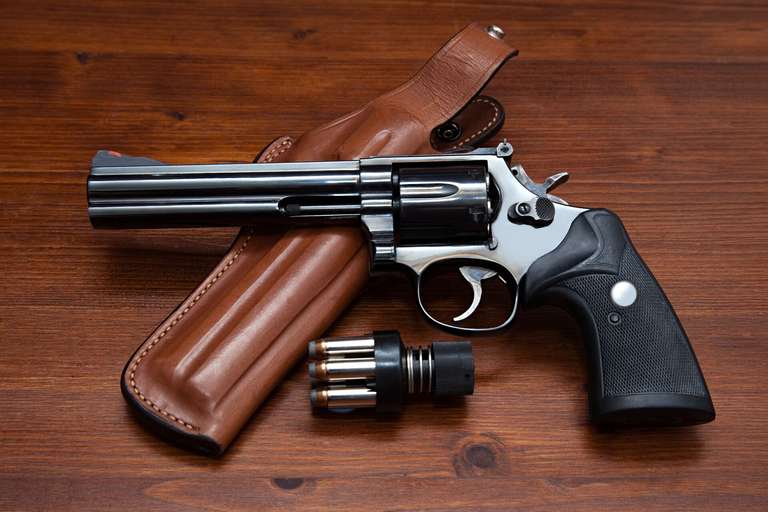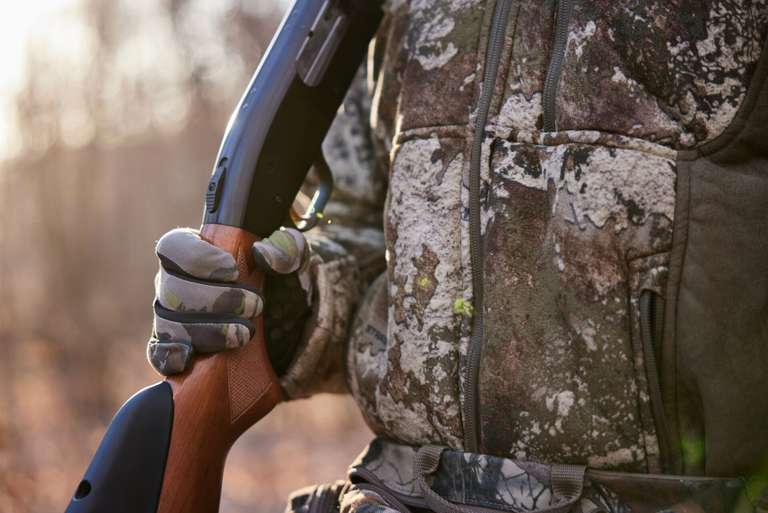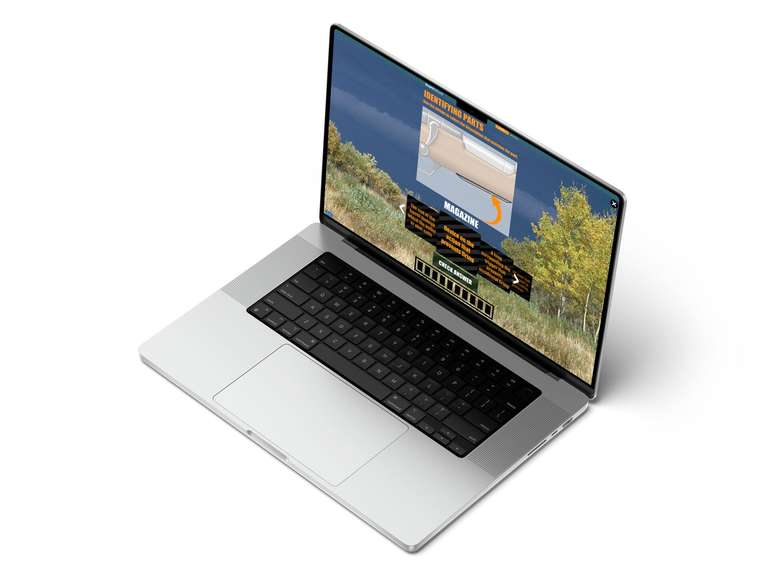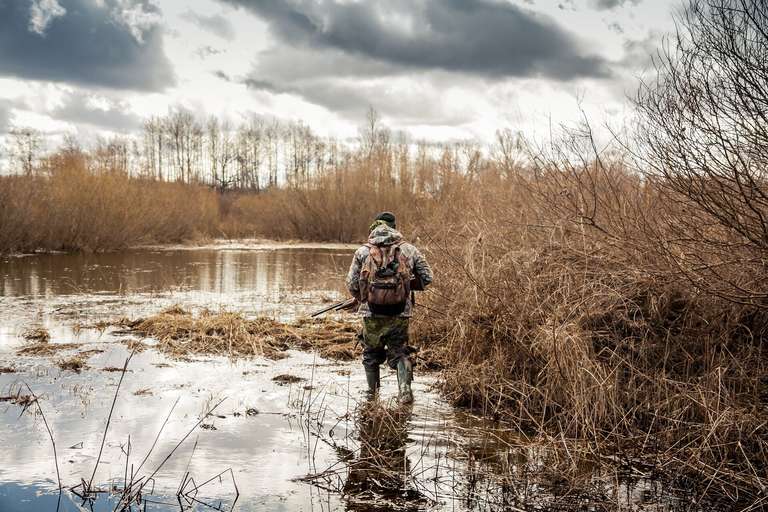Firearm Safety: How to Use the Trail Carry
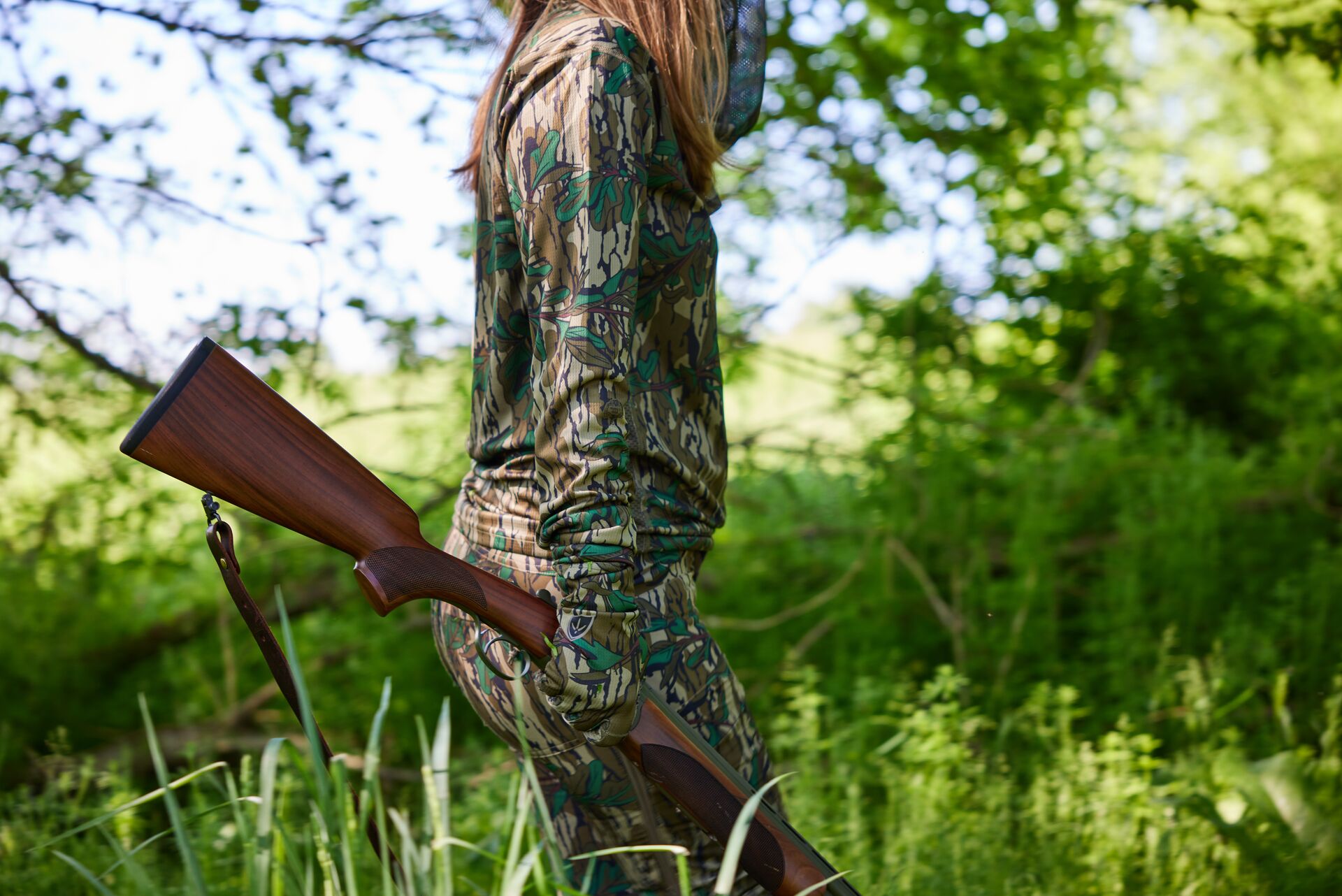
As a hunter, you must navigate various terrains while safely handling your firearm. Compared to shooting at a range with a firing line to mark your safety boundaries, hunting in the field requires a 360-degree awareness when holding your rifle or shotgun.
Whether moving through dense woodlands, crossing open fields, or wading through a shallow stream, safely carrying your firearm is critical to a safe and successful hunt.
One of the more versatile and practical carry methods is the trail carry. Keep reading to learn how to use this technique for carrying your firearm safely in the field.
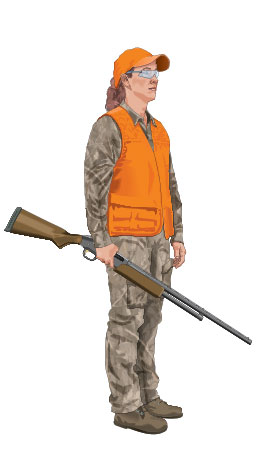
What is the Trail Carry?
Trail carry is a technique of carrying a long gun (rifle or shotgun) with one hand along your side, with the muzzle pointed down.
The hand typically holds the weapon in front of the action since that tends to be the natural balance point of most long guns. However, that balance point will change based on your weapon type, optics weight, magazine placement, and other balance-influencing accessories like suppressors and bipods.
When to Use It
Trail carry is most often used in terrain where walking is easy and doesn't require using your hands for balance, climbing over obstacles, or moving thick brush out of your way. Here are a few scenarios in which this carry is ideal.
Walking Short Distances
If you only have to walk a short distance, trail carry is an easy and efficient method to carry your weapon. This makes it a popular way to carry your rifle or shotgun to and from your vehicle and the blind.
Clear Trails
Trail carry works best when you have a clear, somewhat level path to walk on. That means no brush or obstacles that would require both hands to navigate.
Solo Hunting
Even though the weapon's muzzle is pointed toward the ground, it still has the potential to point toward someone in your group who is in front of you.
Trail carry is safest when hunting alone or when your partners are behind you.
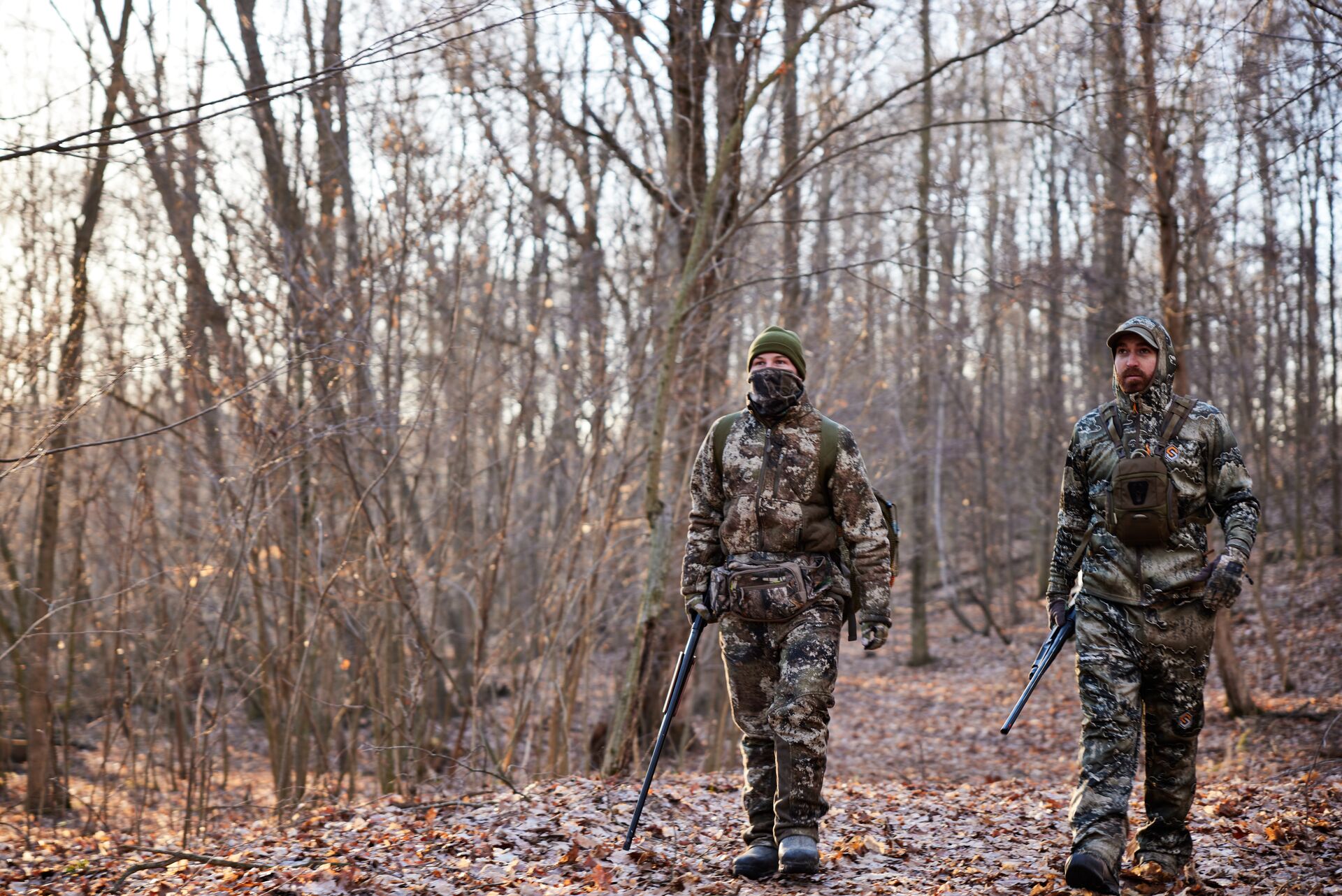
What Are the Advantages of the Trail Carry?
The trail carry's primary advantage is that it allows you to keep one hand free while allowing quick access to your firearm when you need to make a quick shot.
It is also comfortable because the gun's weight is evenly distributed while the muzzle is pointed in a safe direction.
Safety Considerations
Although trail carry is generally a safe carrying method, please keep these safety considerations in mind:
- Make sure the weapon is unloaded before you start carrying it.
- Keep the safety engaged until you have identified your target and are ready to shoot.
- Always be aware of your surroundings and where your hunting partners are relative to your position.
- Maintain constant muzzle awareness, especially when covering challenging terrain, to ensure the muzzle is always pointed in a safe direction.
Even when using this carry technique, it's crucial to be aware of where your firearm points and who or what is nearby.
Proper Technique When Using the Trail Carry
Follow these four steps for a proper trail carry:
- Hold the firearm in your non-dominant hand, gripping it just forward of the action or where it naturally balances in your hand.
- Let your arm hang to your side with the muzzle pointed forward and toward the ground.
- Make sure the safety is engaged, and your carrying hand fingers are outside the trigger guard.
- You must maintain complete awareness of your weapon's position as you move so the muzzle never swings in an unsafe direction.
We recommend practicing the trail carry at home with an unloaded shotgun or rifle until the method feels natural.
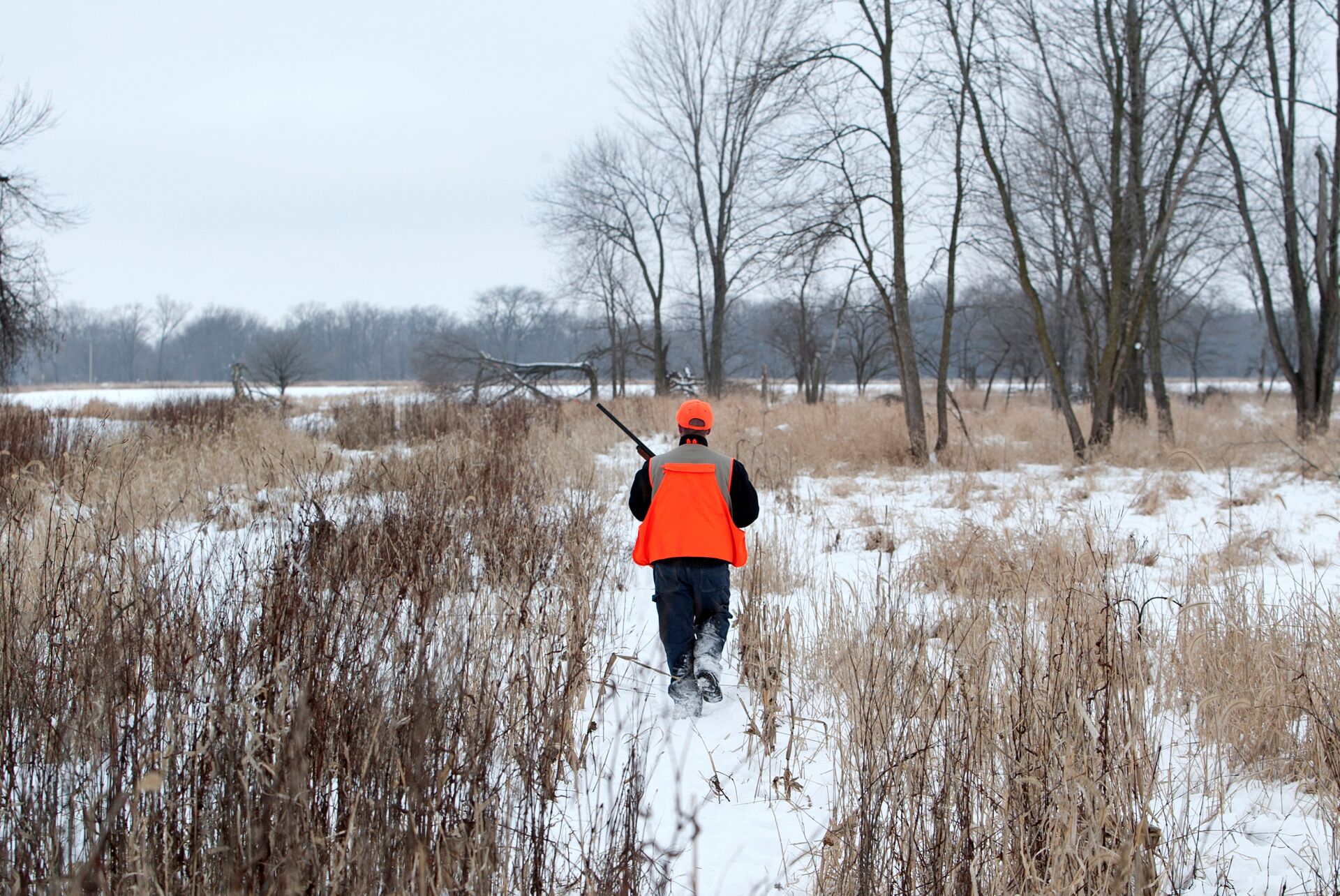
Situations to Avoid With This Carry Technique
Although the trail carry is a versatile and comfortable weapon-carrying method, it is less than ideal — and even unsafe — in some scenarios.
Dense Cover
When trying to cross through dense brush, the muzzle can get snagged or caught on a branch, causing you to lose control of the firearm. Avoid this carry when hunting in thick cover.
Crossing Obstacles
Chances are, you'll come across a fallen log or something in your pathway during a hunt. Situations requiring both hands, like scrambling over rocks, fallen trees, or steep ascents and descents, are not ideal for the trail carry.
Hunting in Groups
When you walk with hunting partners in single file on a narrow trail, your muzzle may inadvertently point at the person in front of you. This becomes more problematic when moving up a steep trail since your muzzle will tend to tilt upward.
Alternatives to the Trail Carry
Hunting can be an extremely dynamic environment, depending on the type of hunting and the terrain you need to cover. In situations where the trail carry is not effective or safe, you may need to use an alternative carry method.
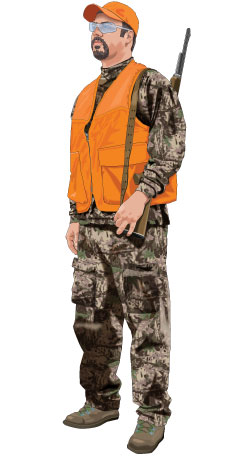
Sling Carry
Use a two-point sling to carry the firearm on your back or over your shoulder. The sling carry is easier for longer hikes, steep climbs, and when you need to use both hands.
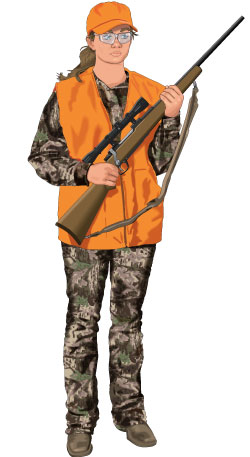
Two-Handed Carry
When moving through dense vegetation, moving through water, or anticipating needing to make a quick shot, use a two-handed carry for maximum control.
Hold the firearm close to your chest with your dominant hand on the grip and your non-dominant hand on the foregrip.
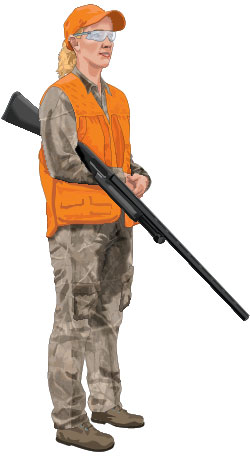
Elbow Carry
Like the trail carry, the elbow or side carry is a one-arm carry with the muzzle pointed at the ground. The weapon's action, or natural balance point, rests in the crook of the dominant arm's elbow, and the butt is tucked under the armpit. This carry method is typically used when standing or walking with a break-action shotgun.
Each firearm carrying method should have its place in your safe hunting habits and should be used based on the environment and specific hunting scenario. The critical decision on which method to use should always be based on efficiency and muzzle awareness to ensure safety in the field.
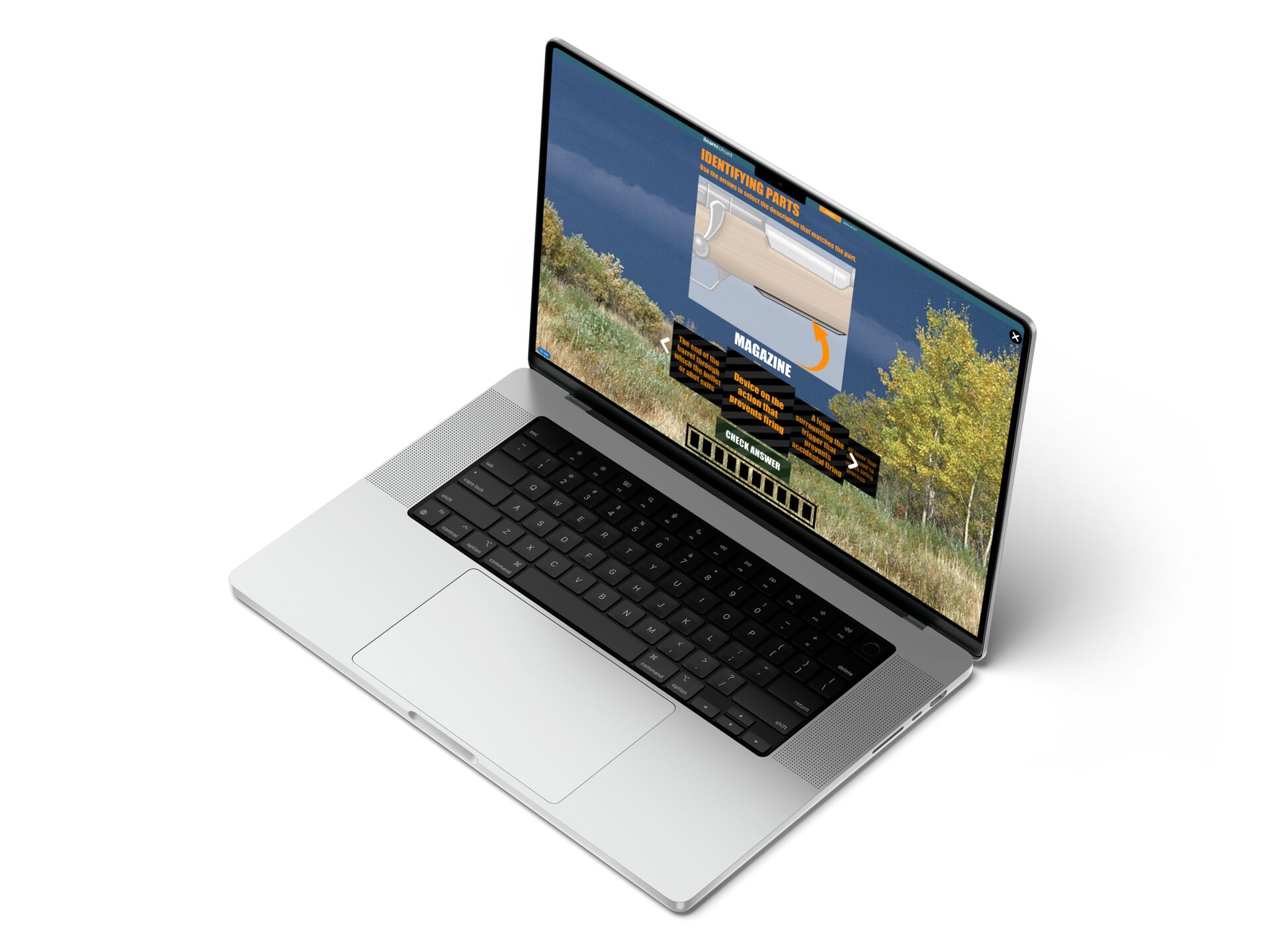
Learn More About Carrying Firearms Safely With ilearntohunt
Mastering the trail carry and understanding its pros and cons is a crucial skill for today's long gun hunter. Carry methods are one piece of the puzzle when it comes to being a responsible hunter regarding firearms handling and safe hunting practices.
To learn more about handling your firearm safely, take a hunter education course to hone your hunting and firearms safety knowledge. ilearntohunt provides an online, gamified experience for hunters to learn about crucial safety essentials to help them stay safe in the field. Plus, our course meets state requirements for hunter education!
Prioritizing firearms safety and ongoing education makes you a more skilled hunter in the field and contributes to the hunting community's positive image. As you prepare for your next hunt, make sure you've taken your course! Find the one that applies to your state and get started.

